How war and agribusiness are destroying Ukrainian steppes
"Beautiful places are more likely to receive protected status, while there’s no one to stand up for "unattractive" nature," writes Ukrainian steppe researcher Liubov Ilminska, adding that scenic cliffs over water contain only a fraction of the biodiversity found in a typical meadow-steppe ravine.
This "rich inner world" might seem unphotogenic: a broad plain, grass, shrubs, with no tall cliffs, ancient trees, or dramatic elevation changes. Why protect something like that? But in reality, these "unphotogenic" spots are a vital part of a fragile ecosystem, one that today suffers both from climate change and human intervention.
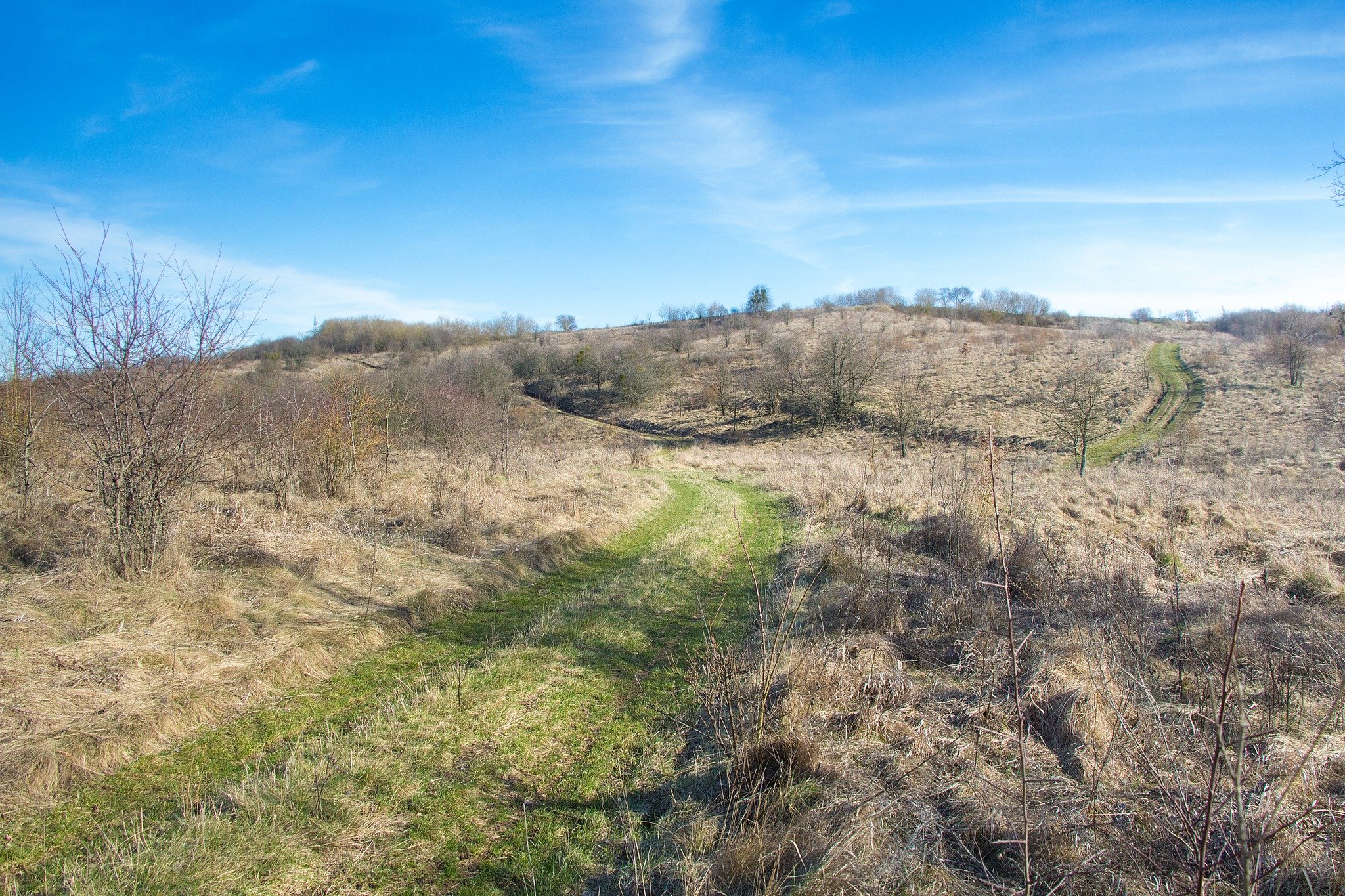
The steppe, which geography textbooks state covers 40% of Ukraine's territory, now occupies only about 2–3%. Even these remnants face the threat of destruction. This loss poses a significant ecological catastrophe for our country. To understand the implications and explore potential solutions, we spoke with Dr. Anna Kuzemko, a leading researcher at the Institute of Botany of the National Academy of Sciences of Ukraine, Doctor of Biological Sciences, and co-founder of the Ukrainian Nature Conservation Group.
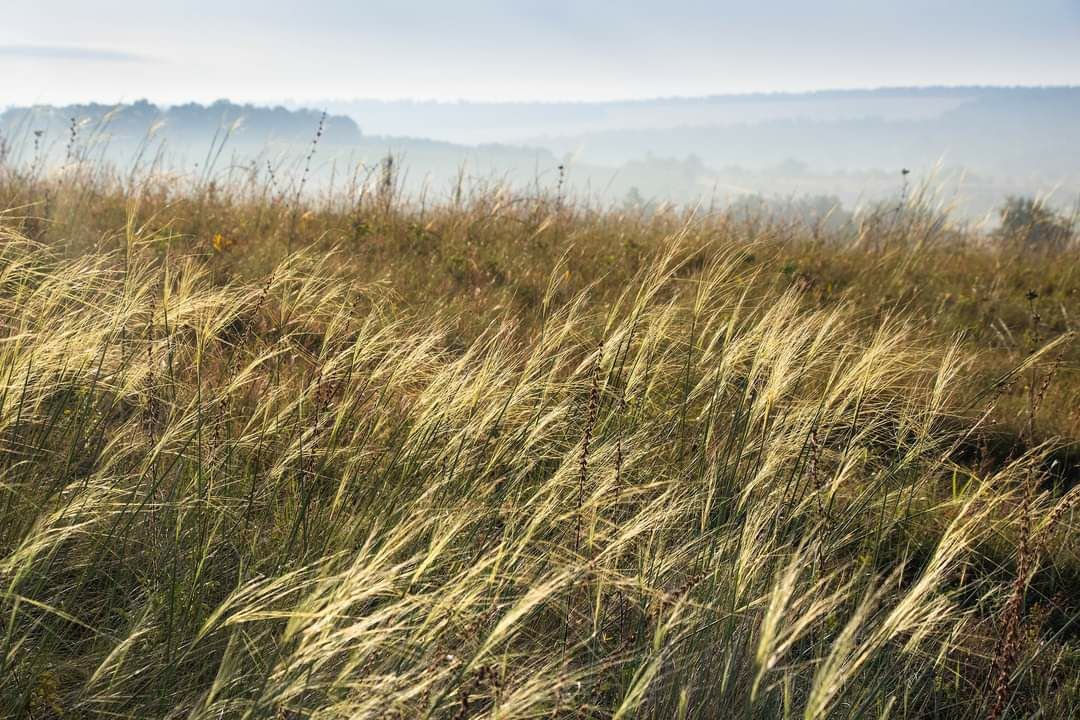
Where have the steppes gone
According to Anna Kuzemko, the situation with remnants of steppe vegetation in Ukraine was dire even before the full-scale invasion. A significant portion had been plowed over in the past five years, due to land reform that allowed the repurposing of land. This led farmers to make active use of the land rather than leaving it fallow.
"Additionally, new machinery capable of plowing steppe slopes has emerged. There used to be a regulation prohibiting the disturbance of steppe slopes with a gradient greater than 5–7%. Now, we’ve documented plowing on slopes with gradients up to 30 degrees," says Anna Kuzemko.
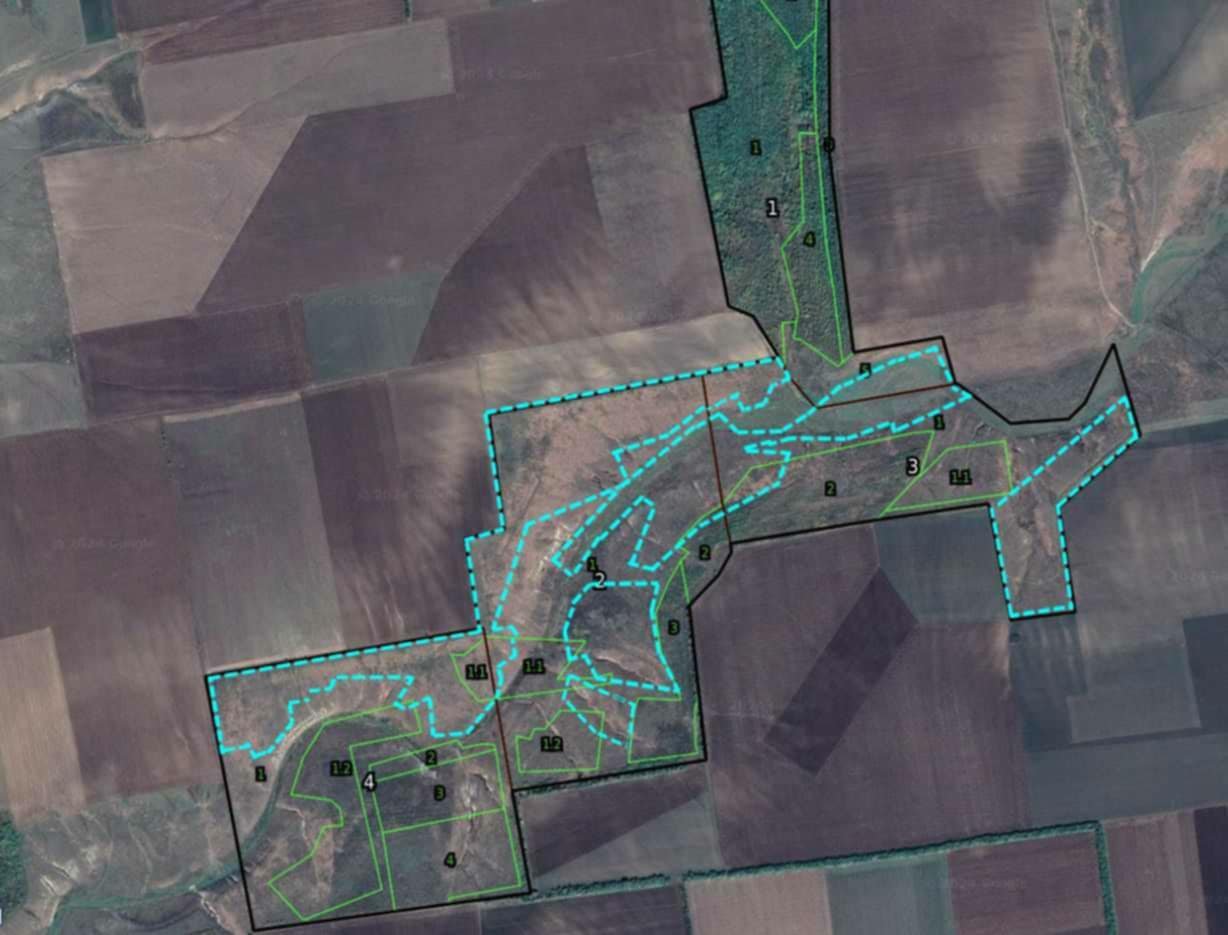
War and corn
With Russia's full-scale invasion of Ukraine, the situation, naturally, worsened. Most of the remaining natural steppes are now either in temporarily occupied territories or in active combat zones, where they face fires, explosions, landmines, and heavy machinery.
On Ukrainian-controlled territory, according to Anna Kuzemko, only two reserves still have authentic, classic steppe: the "Yelanets Steppe" in Mykolaiv region and "Mikhailivska Tselina" in Sumy region. In the occupied territories, there is the "Askania-Nova" reserve, the Black Sea Biosphere Reserve, and several national nature parks.
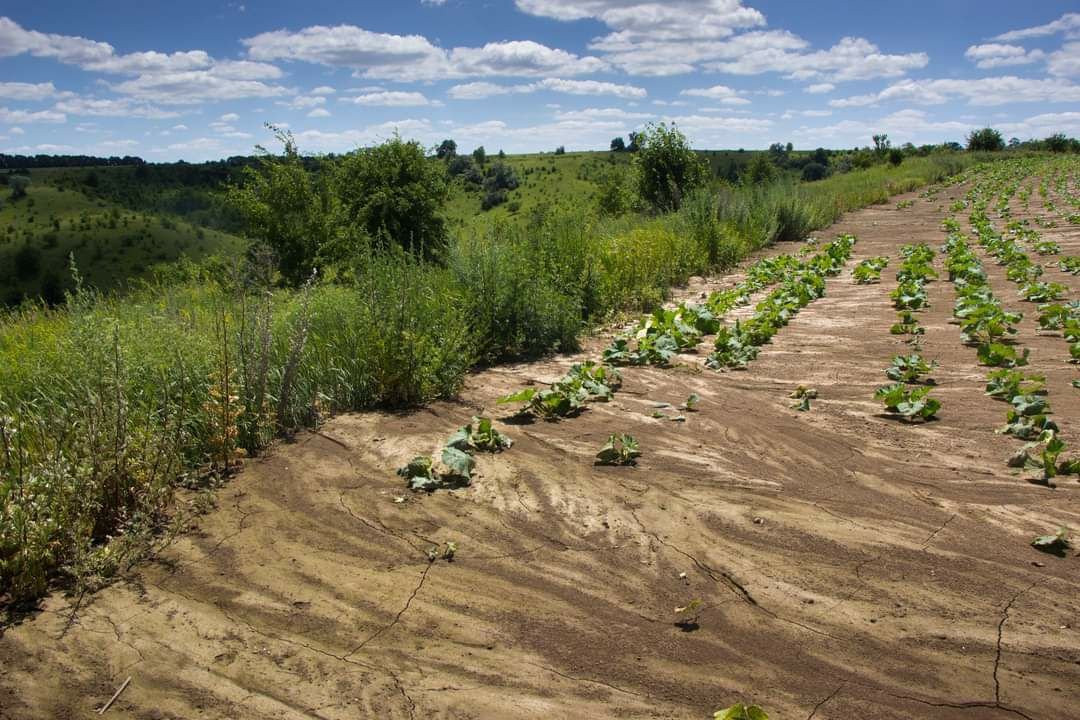
Unfortunately, even in the reserves that remain on land free from occupiers, it’s hard to say the steppe is entirely safe.
“I’m a member of the Scientific and Technical Council of the "Yelanets Steppe." While driving through the reserve, we saw uprooted trees. It turns out the locals had done this under the orders of the head of the local community, who wanted to plow the land and plant corn,” shares Anna Kuzemko as an example. "He justified it by saying, "You’re not doing anything with this land anyway, not using it in any way. We’ll just plant a bit of corn here, no harm done." This reflects an attitude toward the steppe, even a steppe reserve, as land that is "idle" and therefore must be put to use."
Afforestation is also harmful
The destruction of Ukraine’s steppes is not solely the fault of agricultural workers. Surprisingly, foresters and even some eco-activists have also contributed to the problem.
"In Ukrainian society, there’s a prevailing notion that "nature" primarily means forests. So forests are what people focus on protecting, planting trees, and so on. Many times, people wanted to do something good and, with this good intention, plowed steppe areas to plant various non-native species. For example, red oak. In doing so, they destroyed the typical ecosystem of these areas, including numerous rare species of flora and fauna listed in the Red Book. Although they thought they were doing a good thing by planting trees, they were actually harming the ecosystem," the scientist explains. "Many steppe areas were destroyed in 2009–2010 during the implementation of the "Forests of Ukraine" program."
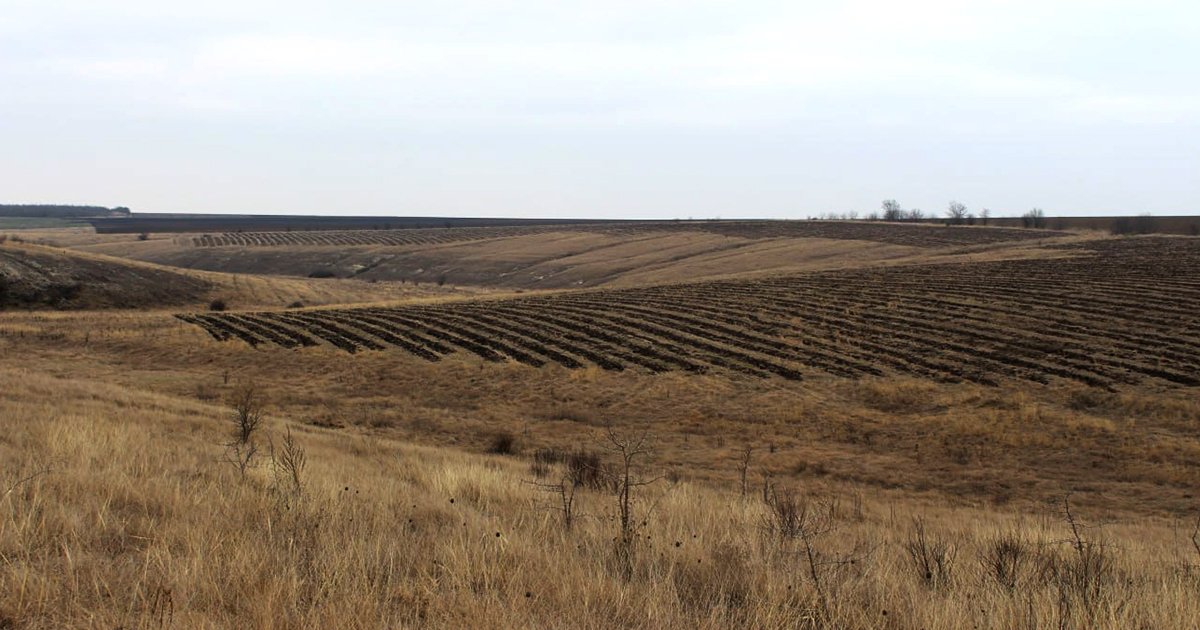
Over time, according to the expert, the situation improved. In some regions, people started to listen to ecologists, and foresters began coordinating the areas they planned to afforest. If these were valuable steppe areas, they would be excluded from planned afforestation. Unfortunately, in the agricultural sector, the situation has not changed. Farmers still try to use every "free" patch of land, not realizing that they are ultimately harming themselves and their own businesses.
No steppes — no black soil
It is thanks to Ukrainian steppes that we had what Ukraine was famous for — the richest black soils. Now, we are losing this wealth.
"I know people who work in an agrochemical laboratory. They conduct analyses and, based on these, provide farmers with recommendations on which fertilizers to use and how to improve the physical or chemical properties of the soil. These analyses show that the humus level — which actually nourishes plants — is currently very low. Farmers ask how to increase it. But this can't be done artificially; humus forms only within a natural steppe ecosystem. If the steppes are plowed, the fertile soil layer won’t form. Without steppes, there are no black soils," explains Anna Kuzemko.
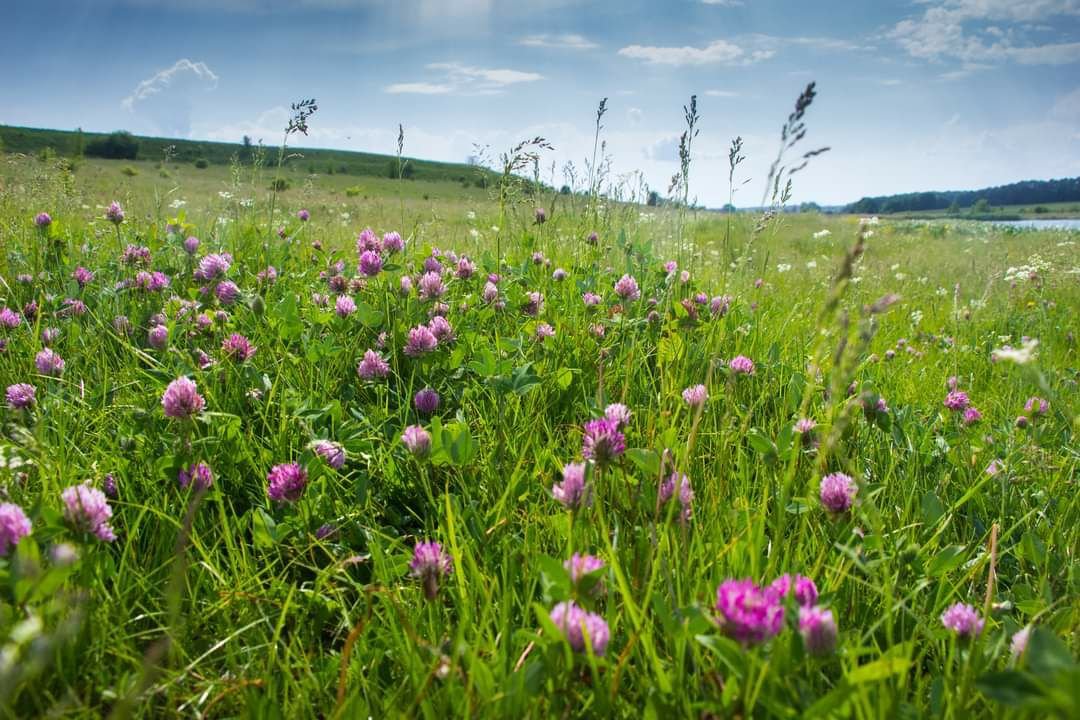
The depletion of Ukrainian land is also driven by the active plowing of steep slopes.
"The steppe turf holds water and soil. If its integrity is disrupted, erosion occurs, and the most fertile layer of soil simply washes away into ravines, which also leads to the silting of rivers, especially smaller ones that are rapidly disappearing in Ukraine," explains the expert.
By plowing steppe areas, farmers suffer not only from the decreased fertility of the land.
"Remember the dust storms in Polissia in 2021? And the droughts? Many farms went bankrupt because of them. Farmers took out loans but couldn’t repay them due to poor harvests, and some even took their own lives as a result. Storms, droughts, fires — all of this is happening now too. But most don’t realize that this is a consequence of human activity, that they are causing harm with their own hands. For everything to function properly, a certain percentage of wild nature must be preserved," the ecologist notes.
We should also remember that steppe ecosystems provided us with many medicinal plants, honey plants, and hay. And few people know that the steppe is like an "upside-down forest." That is, the above-ground part of the plants is small, but they have very powerful root systems.
"This underground "forest" captures carbon from the atmosphere, thus helping to combat global climate change," emphasizes Anna Kuzemko.
What to do now
Since the full-scale invasion, a significant portion of arable land has been mined and is unsuitable for growing crops. As a result, more and more typical steppe areas are being plowed.
"The first step needed is to legally prohibit this, to ban changing the land’s designated purpose. If a parcel is listed in the land registry as a meadow or pasture, it should not be converted into arable land," asserts Anna Kuzemko.
According to the expert, environmental organizations have been trying to address this issue for five years by drafting projects and petitions. But so far, farmers prioritizing quick profits from agricultural activities have prevailed.
"They continue to say, even at the highest levels, that Ukraine’s extensive areas of plowed steppes, drained wetlands, and logging are a positive thing. They claim it’s great that we actively use natural resources and leave nothing idle. It’s strange, though. After all, people who live on this land should be invested in preserving it for their children and grandchildren," says Anna Kuzemko.
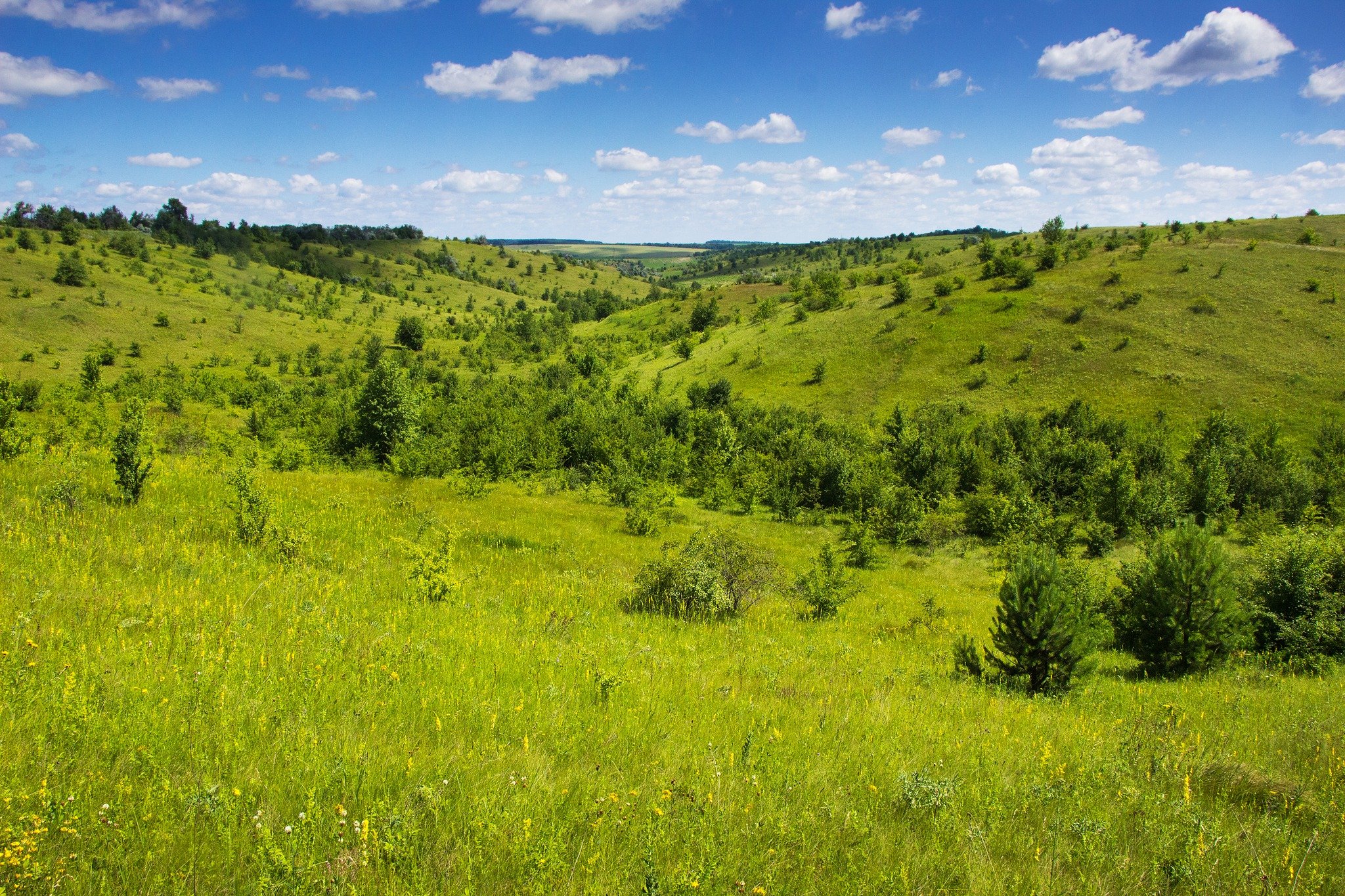
What can everyone do to preserve the steppes? Take care of at least one steppe or meadow area near your home, advises researcher Liubov Ilminska. Visit it, take photos, share beautiful views, find out what plants and animals live there, develop an interesting walking route or eco-trail, get your fellow villagers interested, draw attention to the need to preserve your favorite steppe place, learn about the role of herbaceous ecosystems in maintaining the overall ecological balance, and tell others. Photo by Liubov Ilminska
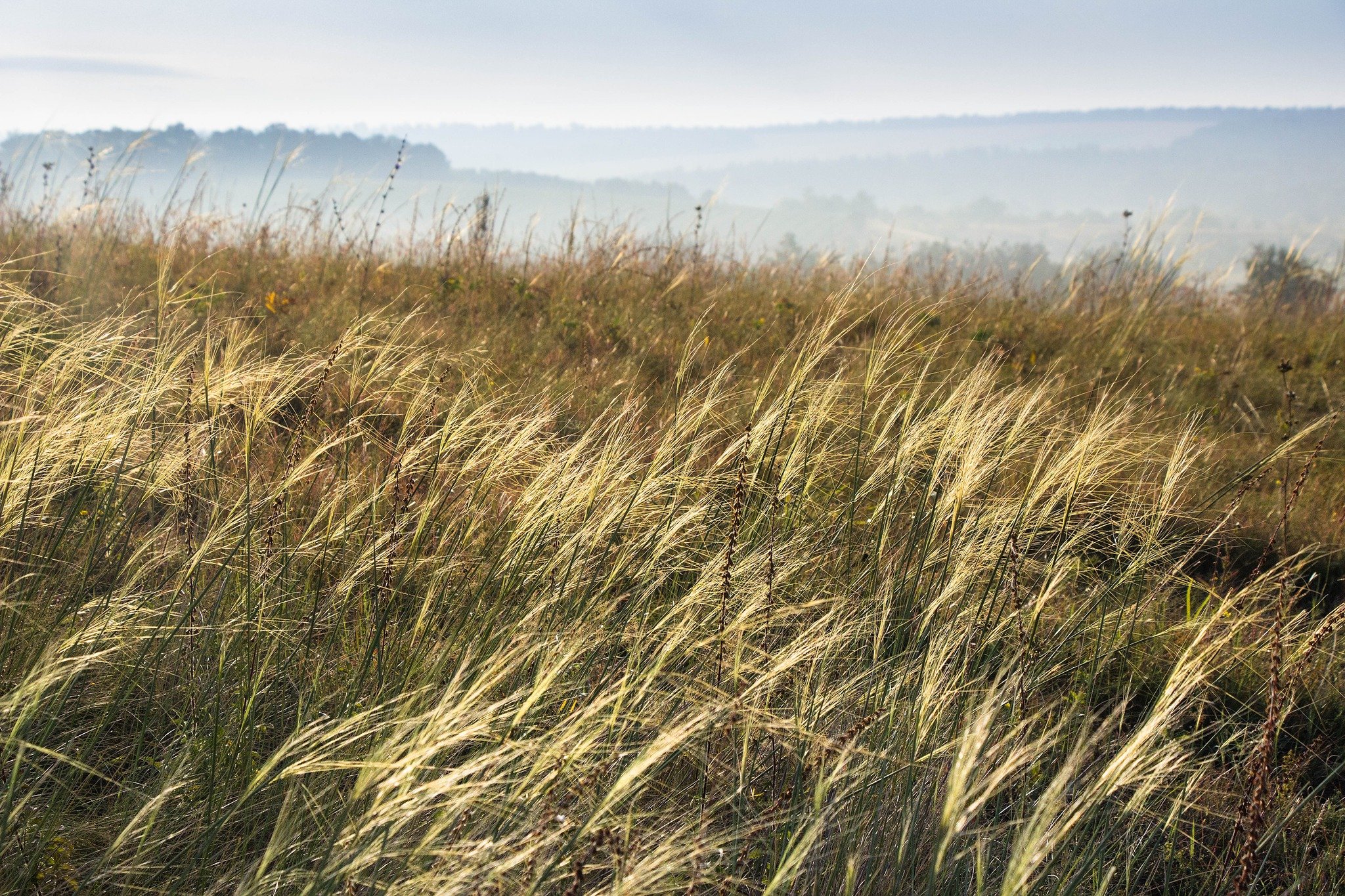
What can everyone do to preserve the steppes? Take care of at least one steppe or meadow area near your home, advises researcher Liubov Ilminska. Visit it, take pictures, share beautiful views, find out what plants and animals live there, develop an interesting walking route or eco-trail, get your fellow villagers interested, draw attention to the need to preserve your favorite steppe place, learn about the role of herbaceous ecosystems in maintaining the overall ecological balance, and tell others. Photo by Liubov Ilminska
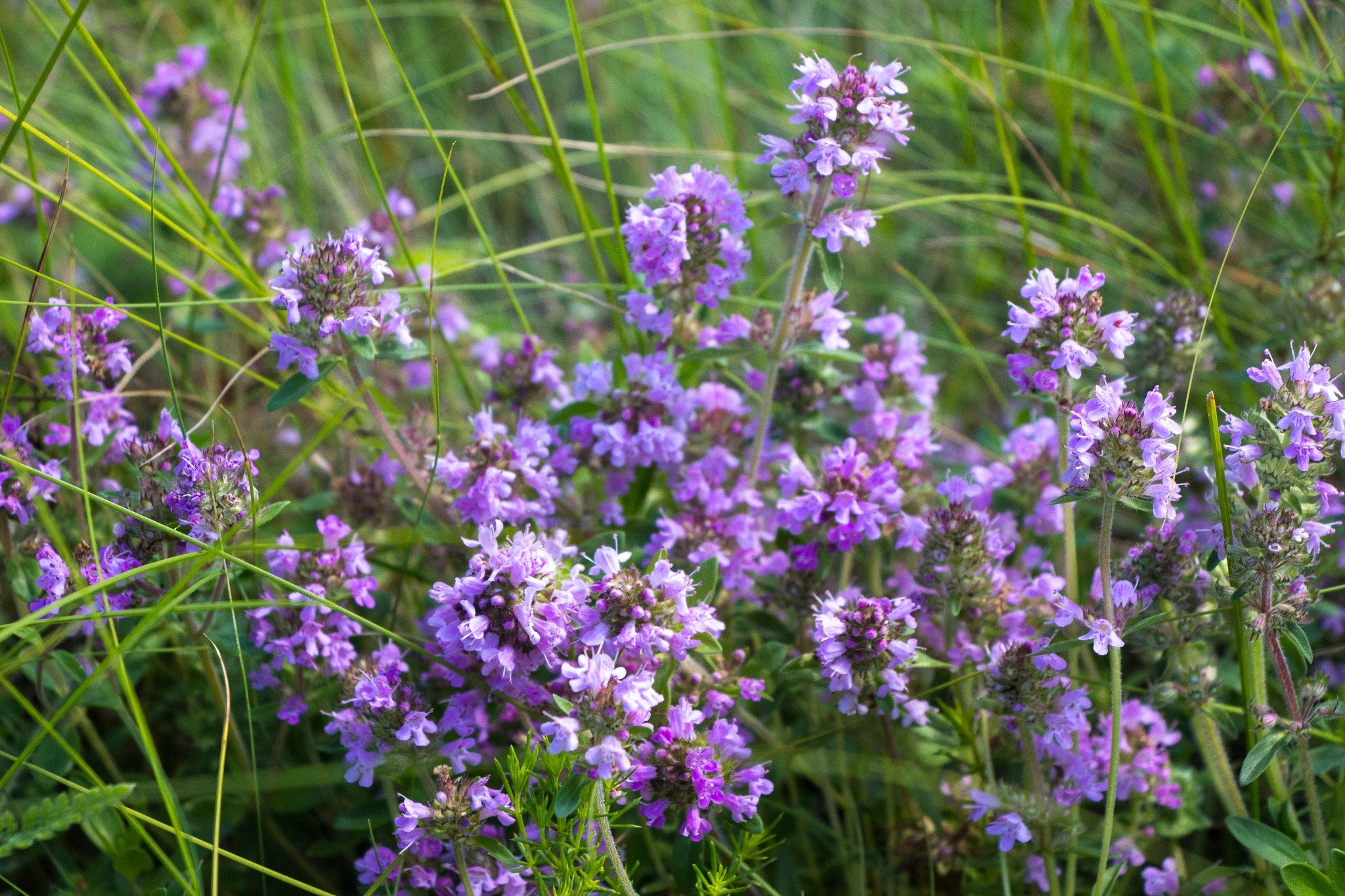
Myzyniv ravines in Cherkasy region. Thyme is still blooming on the northern slopes. In some places, it forms a continuous fragrant carpet, so soft that when you walk on it, you fall through it as if in moss in a swamp. Photo: Liubov Ilminska
What can be done with steppe areas that have already been plowed? They can be restored through active methods, and there are examples of this in Ukraine — or at least, there were.
“Oleksiy Burkovsky from the All-Ukrainian Ecological League bought a plot in his village in Donetsk region and was creating a steppe phytocoenosis there (a community of plants that grow over a long period in a specific area). He documented the technical steps, the plants that grew, and had very positive results. Unfortunately, this site near Pokrovsk is now abandoned, as Oleksiy had to leave. What’s happening there now is unknown,” says Anna Kuzemko.
Kuzemko cited another successful example of restoring a large steppe area — the Tarutyn Steppe in the Odesa region. This area was once under the Ministry of Defense, later designated as a state reserve with vast steppe expanses.
Later, the Ministry of Defense illegally transferred it to farmers, who plowed 1,500 hectares. The environmental community discovered this, and plowing was halted. The court ordered compensation for the damages, which were substantial and beyond the means of any farmer. A public organization then began a project to restore the Tarutyn Steppe.
Restoration of the steppe
"The essence of the steppe restoration method is as follows: grasses from neighboring areas are mowed when their seeds are ripe. This hay is then spread across the entire area so the seeds can self-sow. Alternatively, seeds are collected and then sown directly. Gradually, this process forms a steppe phytocoenosis. It’s an effective practice that has proven successful in Europe," explains Anna Kuzemko.
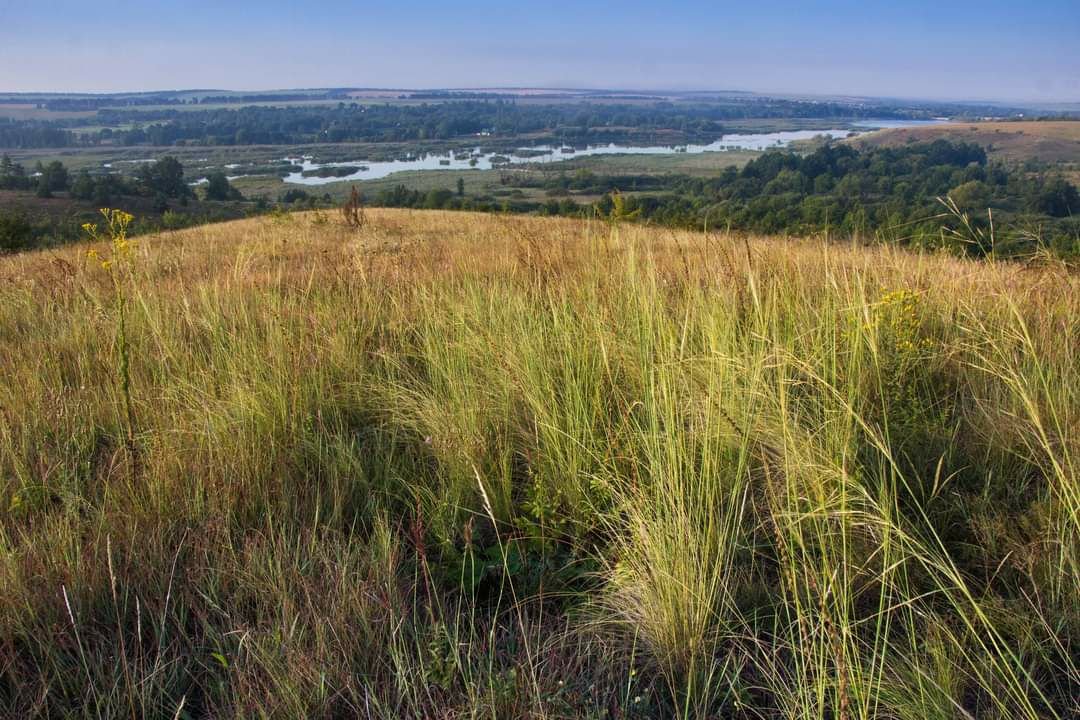
However, the expert notes that no method can fully restore a steppe area to its original state. No matter what is done, the ecosystem will never be exactly as it was before the damage.
"We conducted several expeditions to the Chornobyl Zone, specifically to the Chornobyl Radiation and Ecological Biosphere Reserve. Nearly 40 years have passed since the disaster, yet it’s clear that the natural phytocoenoses in areas that were once meadows, then gardens and fields, have not fully recovered. They resemble what they once were but are much poorer in species composition, and their structure is completely different. I also visited an area in Bulgaria, near the city of Pleven, where battles were fought in the late 19th century. Among the steppe vegetation, traces of trenches, dugouts, and craters are still visible. Even 150 years later, the land hasn’t fully recovered," shares Anna Kuzemko.
Perspectives
In the future, steppe areas need to be inventoried to assess the extent and nature of their damage.
"Areas surrounded by natural vegetation will recover on their own. But if it’s a small plot surrounded by fields, it will need active assistance to restore," explains the expert.
We must also recognize that large areas will remain that are either difficult or impossible to clear of mines.
"For this reason, there is an idea to leave highly mined or heavily chemically contaminated areas untouched, designating them as protected natural zones, similar to the Chornobyl Reserve. I think this is a very good idea, as it would, first, allow nature to recover on its own. Second, it would help Ukraine meet its international commitments regarding the Green Deal and the Pan-European Biodiversity Conservation Strategy by expanding the protected areas in the country to 30%. Similar examples exist in the former Yugoslavia. In Croatia, many mined areas are closed off to people, allowing ecosystems to recover more quickly," says Anna Kuzemko.
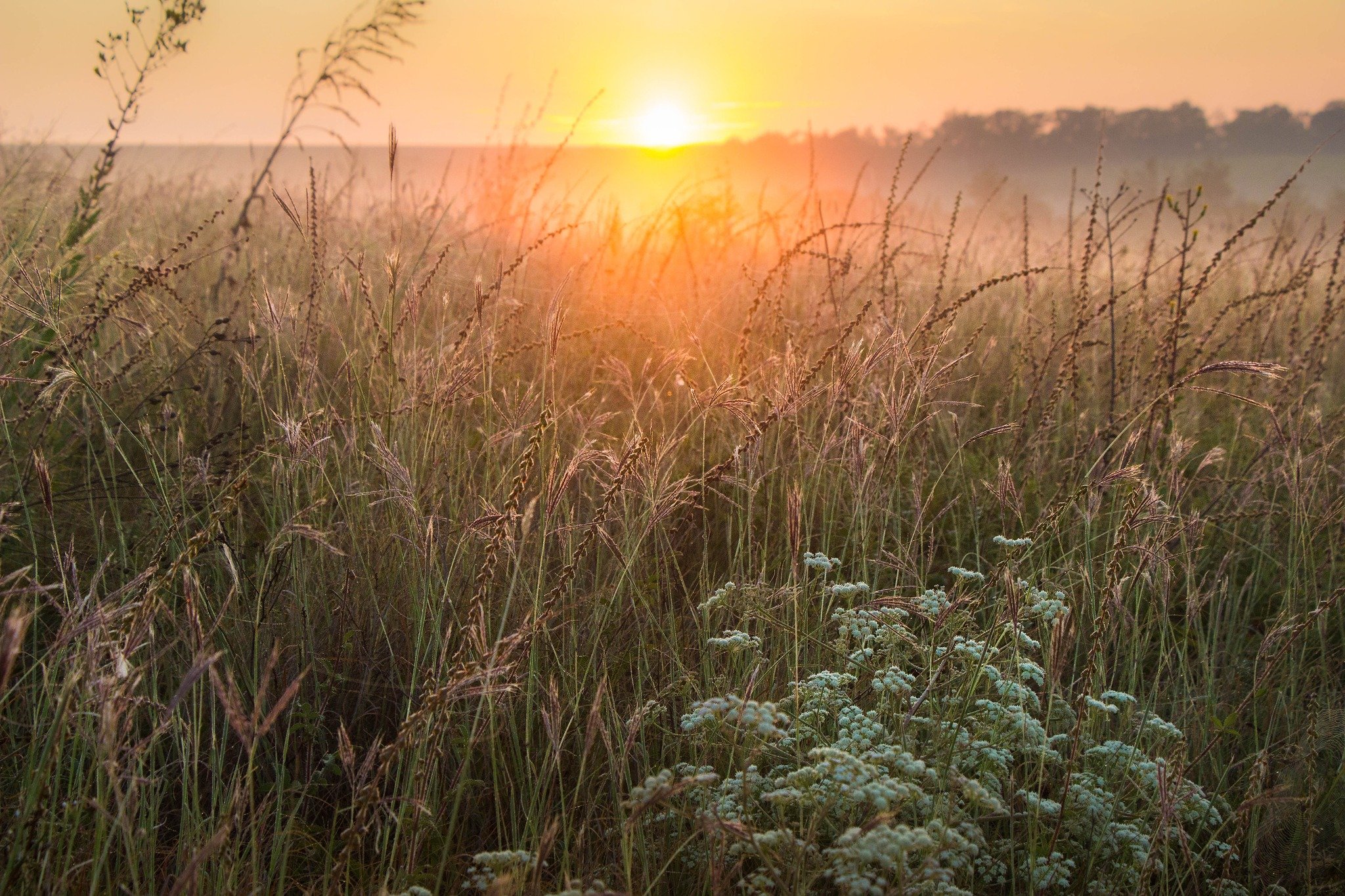
According to the expert, it’s also crucial to actively map wild nature — forests, steppes, meadows, and wetlands — to assess the damage caused by the war and demand compensation from the aggressor country.
"Unfortunately, this wasn’t completed before 2022. In 2018, we published the National Habitat Catalogue of Ukraine, which includes a methodology for mapping habitats correctly. But at the time, authorities decided it wasn’t a priority, and there was no funding for such efforts. Now, we have to "catch up" to assess the real damage done to Ukraine’s wilderness by the war. Nevertheless, active mapping is essential to document what remains. So far, my colleagues and I have managed to map habitats in the de-occupied Kamyanska Sich and Sviati Hory National Nature Parks. We’re currently working on mapping the Askania-Nova reserve. Although the area is temporarily occupied, this can still be done remotely. Similar efforts will likely be undertaken for other protected areas affected by the war," shares Anna Kuzemko.
A key challenge, according to the expert, is insufficient coordination. Many people are working to assess damages, but some follow one methodology while others follow a different one. For compensation claims in international courts, however, a standardized, internationally recognized methodology is needed.
"It would be ideal for the government to develop a unified standard. This shouldn’t fall solely on public organizations. Without proper coordination, effective work is impossible," says Anna Kuzemko.

